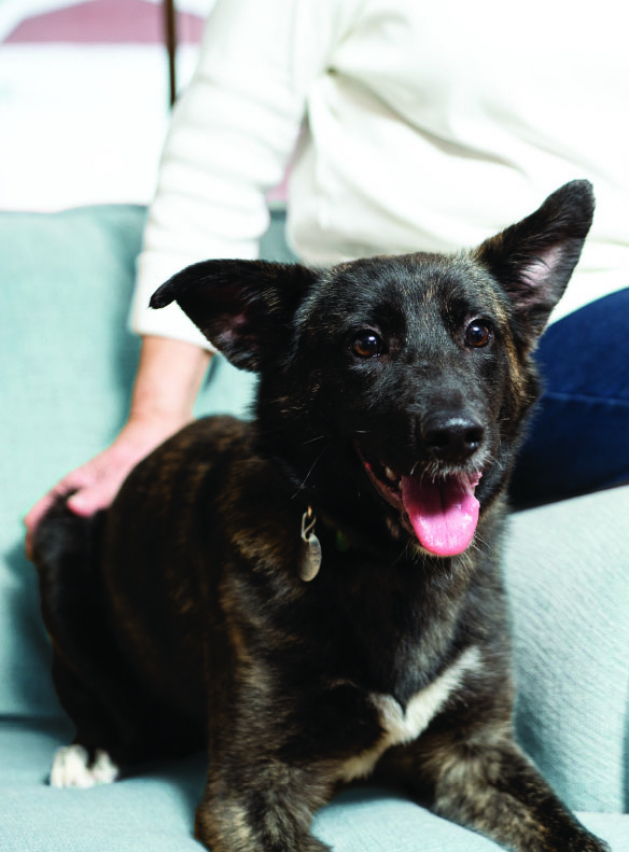
For animals lovers, the idea of helping animals in need is paramount. That’s why Nancy Minion, co-founder and president of Second Chance Animal Rescue worked with other compassionate people in May 1994 to establish an all-volunteer nonprofit 501(c)(3) animal rescue organization.
“We started Second Chance in order to save stray dogs and cats who are picked up by animal control after their legal holding period is up and before they are euthanized,” Minion says. “We wanted to care for the animals differently than a humane society [does,] by having them live in volunteer foster homes with families rather than in cages.”
All cats and dogs that Second Chance takes into the program first have all of their medical needs taken care of—they are checked for heartworm or feline leukemia/FIV, vaccinated, dewormed, flea treated, spayed or neutered and they receive any other procedures they may need, including dental care, eye care and grooming.
“Not only do we rescue strays from animal control facilities, but we also take cats and dogs from cruelty cases, ones who have been abandoned, and also from breeders who are either getting rid of their breeder dogs or cats or who are downsizing,” Minion says.
As Minion explains, when volunteers foster a cat or dog, they get the satisfaction of knowing that they have, literally, helped save the life of an animal.
“Our fosters help the animals bond and feel loved; they help with obedience training, housebreaking, scratching post use and anything the dog or cat will need to help them be successful in their forever homes,” Minion says. “And we really learn a lot about the animal’s personality from the fosters.”
Two years ago when Sandra Smith’s son was in fifth grade, he needed to come up with an idea for his civics project, and he wanted to help in an animal shelter.
“Unfortunately, we couldn’t find a facility that allowed children to work on the property,” Smith says. “In our search, we discovered Second Chance Animal Rescue and reached out to Nancy to see if we could interview her. The interview turned into a training and agreement to become a foster family for cats....The decision to foster was easy for me as I have always loved cats and cats have been a big part of my family’s life.”
Currently Smith fosters three young males (brothers) who have been with her for over a year.
Potential fosters go through a detailed process prior to caring for one of the Second Chance’s animals. The organization screens potential volunteers to assess their strengths. Then they train volunteers according to what they will be doing, Minions says.
“If fostering, they let us know if they want to care for dogs, cats, puppies, kittens or pregnant animals,” Minion says. “Fosters...work with the dog or cat coordinator and [are] provided with training and receive the supplies they will need in order to foster a dog or cat—such as food, carrier or crate, toys, cat litter, dog leashes and collars, etc. The foster gets to participate in the adoption process by showing the animal to the potential adopters, answering questions and completing the adoption paperwork.”
Second Chance takes care of all costs associated with caring for the animals, including veterinarian expenses, food, litter and other supplies.
“In many cases, we don’t know much about the animals who become part of the Second Chance family, so...placing animals in foster homes...gives [the animals] an opportunity to socialize, grow and develop in a loving, caring environment so they can be ready for adoption,” Smith says.
Smith and her family only fosters cats as this point. They’ve had several kittens and cats over the two years they’ve been fostering for Second Chance, who have all been successfully adopted.
Having A Passion
Leah Armstrong has always had a weak spot in her heart for animals of all kinds, so when she and her daughter were talking about adopting another pet, they decided that fostering animals would be far more rewarding and helpful.
“We decided to foster cats (primarily kittens) because we already have one big old bulldog and another, somewhat lonely, cat,” Armstrong says. “We adopted our dog nearly eight years ago from Second Chance Rescue, so we decided to support them as they gave us such an amazing family member.”
Armstrong says that the great thing about being a foster is that you have full control over what animals, and how many animals you take in.
“We often take multiple kittens in, either from a litter or just single kittens found alone, so that they always have a buddy to play with,” Armstrong says. “When potential adopters are screened through the rescue, we set up a ‘meet and greet’ at our home for the animals and their hopefully new families. Paperwork is filled out and then my daughter and I are able to bring the kittens to their new forever home. It is such an amazingly rewarding experience.”
Foster homes are crucial for these animals as many times, animals are picked up through or dropped off at animal control and they are terrified.
“Foster homes give them the safety, love and exposure they need,” Armstrong says. “Fosters are able to get to know the animals and in turn, can help to find a perfect family ‘fit’ for them.”
Instead of living in a cage at a shelter—waiting for a home, with little interaction—they are part of a family, part of a loving home.
“You can imagine what effects on an animal’s behavior living in a loving home versus a cage would be,” Armstrong says. “There are truly no disadvantages to living with a foster for the animals.”
“The rescue’s...priority is finding suitable and permanent homes for the animals, so sometimes it takes a little longer for that special family to find them,” Armstrong says. “The best part is, these foster animals become such a big part of your life, you certainly don’t mind if they get to stay a little longer. On the flip side, it is absolutely wonderful when they find their new home.”
One of the biggest challenges Second Chance faces is the ongoing process of recruiting foster volunteers.
“We can only save as many animals as we have foster homes available, and there are always so many animals in need,” Minion says. “Besides fostering, we need loving forever homes for the animals so fostering an animal or adopting an animal definitely saves lives.”
“The animals stay with the fosters until they are adopted,” Minion says. “Since inception, we have rescued over 9,900 dogs and cats.”
Armstrong says the most rewarding aspect of being a foster is that families are able to help animals get their second (or third, fourth) chance at life.
“Foster pets and rescues seem to know that they are being given another shot and are truly grateful for it,” Armstrong says. “They love like no other. These little pets bring so much joy to our home... every day and because no two animals are alike, it is tons of fun to get to know each one as an individual. I have had some of the most petrified kittens grow into confident, trusting and loving pets. Knowing that we helped them get there—there really is no better feeling. You can feel the differences you are making in both their lives and [the lives of] their new families.”
For Minion, the most rewarding part of Second Chance is saving lives. “It’s a lot of work and sometimes heartbreaking,” Minion says. “But the rewards of seeing a cat or dog go on to its loving forever home is what rescue is all about.”
To learn more Second Chance’s foster program or about adopting, call Second Chance at 651.771.5662 or visit secondchancerescue.org.









